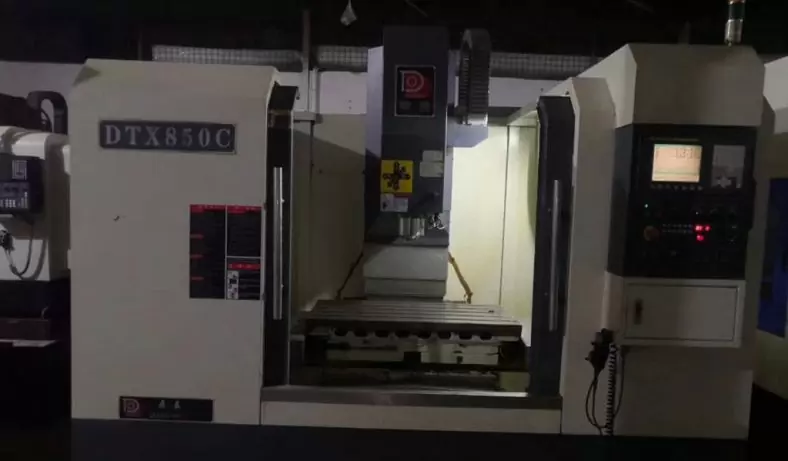The CNC milling process formulation involves several essential steps to prepare and program the CNC machine for milling operations. It includes defining the cutting toolpaths, selecting cutting parameters, and creating the CNC program to control the machine’s movements. Here’s a step-by-step guide to CNC milling process formulation:
- 1. Define Workpiece and Tool Requirements: Determine the dimensions, material, and specific requirements of the workpiece to be machined. Select an appropriate cutting tool based on the material and desired features of the workpiece.
- 2. Workpiece Fixturing and Setup: Plan how the workpiece will be held securely in place on the CNC milling machine’s worktable or fixture. Proper workpiece fixturing is essential to prevent vibration and ensure accurate machining.
- 3. Select Machining Strategy: Decide on the machining strategy based on the desired features of the workpiece. This includes choosing between contour milling, pocket milling, face milling, or other milling techniques, depending on the part’s geometry and requirements.
- 4. Generate Cutting Toolpaths: Utilize Computer-Aided Manufacturing (CAM) software to generate cutting toolpaths based on the selected machining strategy. CAM software takes the CAD model of the workpiece and generates the necessary toolpaths that the CNC machine will follow during milling.
- 5. Toolpath Optimization: Optimize the toolpaths to ensure efficient material removal, reduce unnecessary tool retractions, and minimize air-cutting (cutting without material contact). This step aims to improve machining time and extend tool life.
- 6. Select Cutting Parameters: Determine the appropriate cutting parameters, including cutting speed (surface speed or spindle speed), feed rate, and depth of cut. These parameters depend on the workpiece material, cutting tool, and machine capabilities.
- 7. Tool Compensation and Wear Management: Consider tool compensation factors, such as tool radius compensation, to account for the actual tool geometry during machining. Additionally, implement wear management strategies to ensure consistent tool performance and avoid excessive tool wear.
- 8. Create CNC Program: Write or generate the CNC program based on the optimized toolpaths and cutting parameters. The CNC program consists of G-codes and M-codes that instruct the machine’s movements, spindle speed, coolant on/off, and other actions.
- 9. Simulate and Verify: Before executing the CNC program on the actual machine, use simulation software to visualize and verify the toolpaths. Simulation helps identify any potential collisions, errors, or inconsistencies in the machining process.
- 10. Load and Execute CNC Program: Load the verified CNC program into the CNC milling machine’s control unit. Set up the workpiece and cutting tool, and initiate the milling process. Monitor the machining operation to ensure accuracy and safety.
- 11. Post-Processing: After the milling process is complete, perform post-processing tasks, such as deburring or cleaning the workpiece, to prepare it for further processing or assembly.
By following these steps, CNC milling process formulation ensures efficient, precise, and reliable milling operations, leading to high-quality machined parts and improved overall productivity.
The formulation of CNC milling processing technology is the basis and premise of CNC milling processing programming. The key lies in rationally arranging the process route, coordinating the relationship between the CNC milling process and other processes, determining the content and steps of the CNC milling process, and preparing for programming. necessary conditions. Whether the numerical control processing technology is reasonable or not directly affects the processing quality, production efficiency and processing cost of the parts.
Determine The Location And Content Of CNC Milling
Under normal circumstances, not all surfaces of a part need to be processed by numerical control, and a specific analysis should be carried out according to the processing requirements of the part and the production conditions of the enterprise to determine the specific processing location, content and requirements. Specifically, CNC milling is suitable for the following aspects;Internal and external contours composed of straight lines, arcs, non-circular curves and list curves;
Space Curves Or Surfaces
Although the switch is simple, it has many dimensions and is difficult to detect; Internal organs, internal parts of the box, etc., which are difficult to observe, control and detect when processed by ordinary machine tools; Holes or planes with strict location and size requirements; Simple surfaces or shapes that can be machined in one setup;

The use of CNC milling can effectively improve the productivity and reduce the labor intensity of the general processing content. However, CNC milling is not suitable for simple roughing surfaces and processing contents that need to be coordinated with special tooling.
When specifically determining the processing content of CNC milling, a comprehensive analysis should also be carried out in combination with the company’s equipment conditions, product characteristics, and on-site production organization and management methods, and the principles of high-quality, high-efficiency, and low-cost machining of parts should be completed.
At Be-cu.com,we use advanced equipment to offer you Unparalleled precision for producing metal and plastic machining parts
- We combine the latest CNC milling and turning processes with proprietary technology to deliver high quality, on-demand parts.
- Our team of engineers and machinists program the equipment to optimize cutting time, surface finish, and final tolerance to meet your design specifications
- We specialize in cnc precision machining, single part prototyping, short to medium production runs, manufacture parts on time, every time, so you can stay ahead of schedule
- CNC machining can create very similar parts to series parts. It is often more efficient and faster than other rapid prototyping technologies for the manufacture of a quantity of prototypes between 1 and 10 parts . We also recommend CNC machining for parts with large sizes (greater than 600 mm).
Contact Us ([email protected]) Now for your Custom CNC Machining, We are your best online cnc machining and rapid prototyping services choice!
